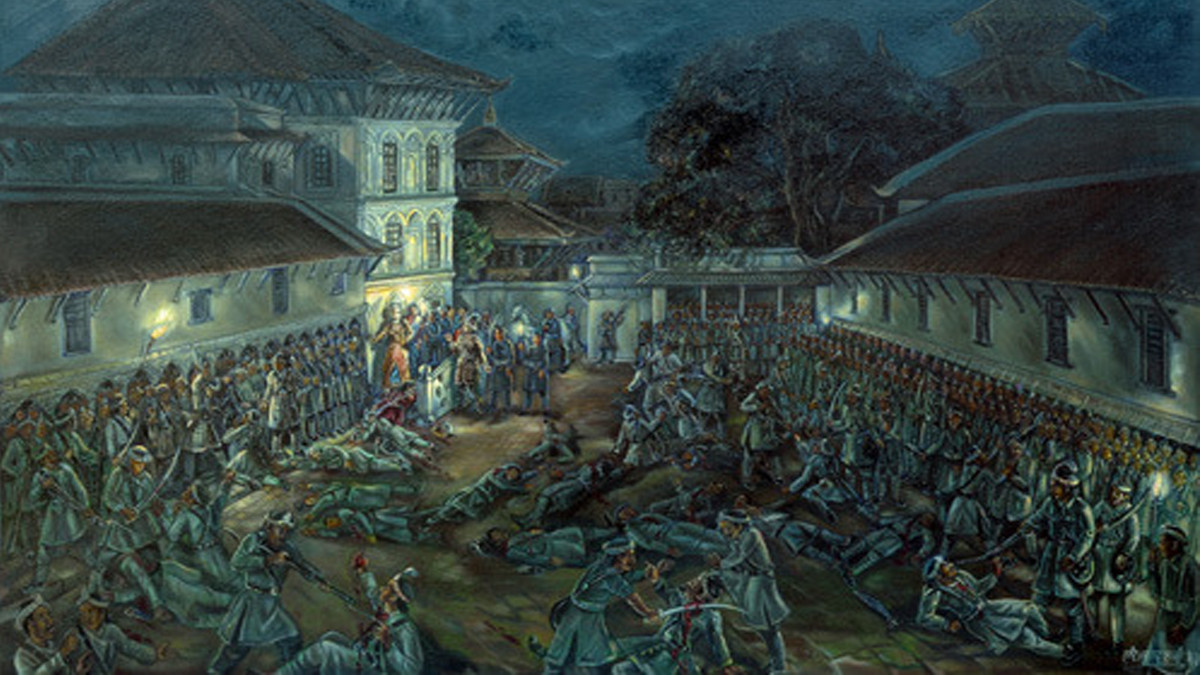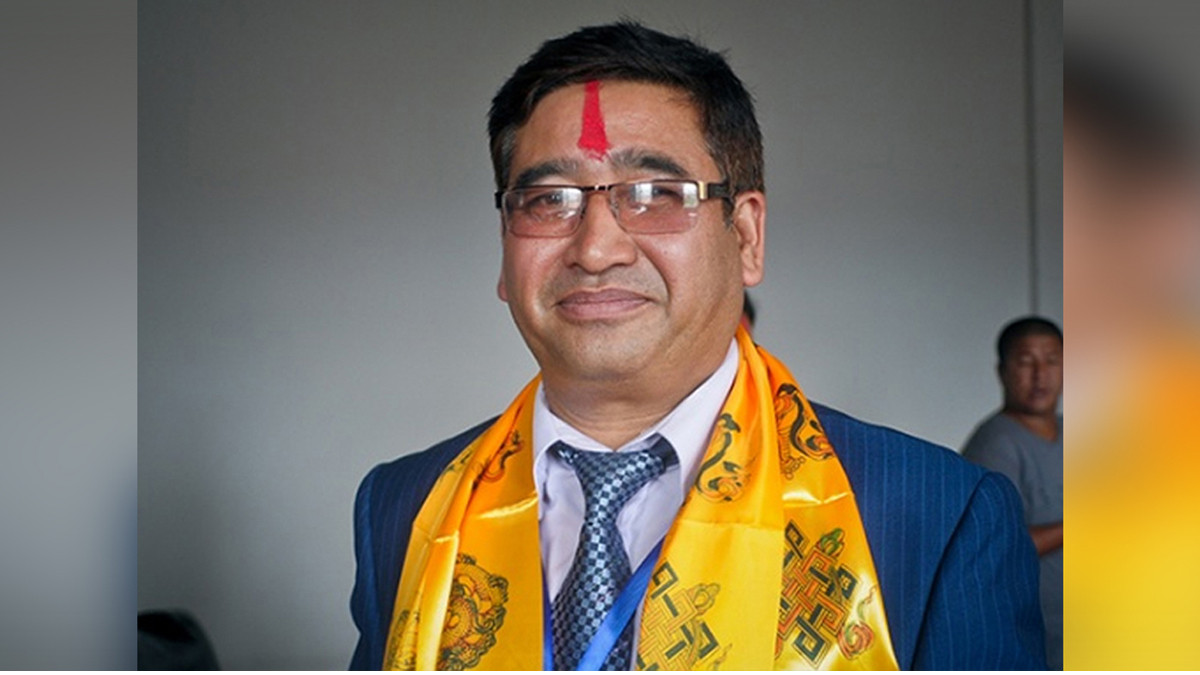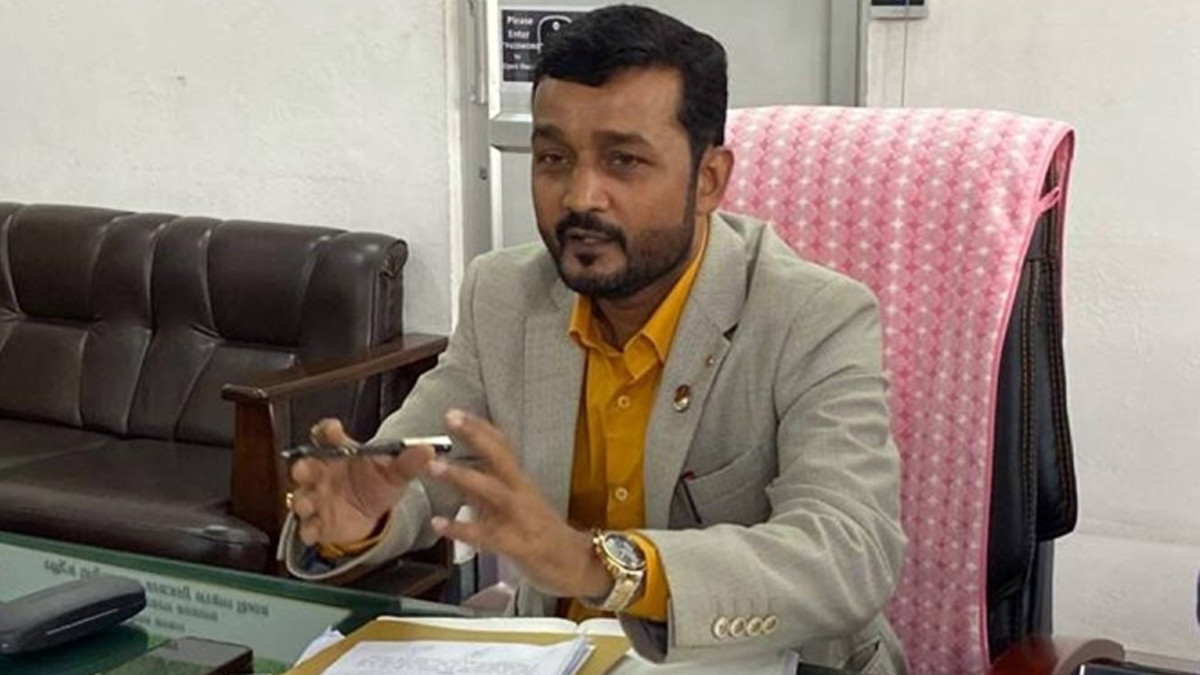 Image for representation
Image for representation
A dreadful Kot Parva (Kot massacre) happened on this day(today) in the history of Nepal. This massacre led to the rise of the Rana regime in Nepal.
This terrible Kot massacre happened in Asoj 2 of 1903 BS. It is the second biggest massacre in the history of Nepal.
As a result of such a tragic situation, Janga Bahadur Rana became the prime minister and the chief of the Nepal Army. Similarly,104 years of Rana rule emerged in Nepal.
The Kot Massacre (Kot Parva) took place inside the palace. It happened when Junga Badhur Rana and his brothers killed the Prime Minister and the relative of the king, Chautariya Fateh Jang Shah along with 40 members of the Nepalese Palace court in the Kot Massacre.
Due to this incident, there was the emergence of Autocratic Rana rule in Nepal, resulting in the monarchy of Surendra Bikram Shah.
Background
At the peak of instability in Nepalese politics, a coalition ministry was formed in September 1845, headed by Fateh Jang Chautaria, but the real power behind the throne was Gagan Singh, believed to be the secret lover of Queen Lakshmidevi, who controlled seven regiments in the army compared to the three under the prime minister. Abhiman Singh Basnyat and Bahadur also served as commanders, each with three regiments. Gagan Singh was found dead on the balcony of his palace on the night of 14 September 1846. The queen commanded Bahadur, who happened to be ready with his regiments, to assemble the entire administrative establishment of the country immediately at the courtyard of the palace armory. Following the queen's orders, Jang ordered his men to let people inside the Kot but not to let them out without Queen's or his own orders.
Overview
Emotions ran high among the assembled bands of nobles and their followers, who listened to the queen give an emotional harangue blaming the Pandes and demanding Abhiman Singh to execute the Pandes whom she suspected for the death of Gagan Singh. Abhiman Singh hesitated and looked to the king. The king hesitated and said to punish the guilty only after proper investigation of the matter. He then left the Hanumandhoka palace and went to the British residency. When he was denied an audience with the resident at such a late hour, he went to Narayanhiti Palace.
Meanwhile, at the Kot, surrounded by Jang Bahadur's regiments, tension grew high as most of the nobles along with prime minister Fateh Jang Shah gathered there. Seeing a high possibility of bloodshed, Jang Bahadur, Fateh Jang, and Abhiman Singh Rana Magar decided that Jang Bahadur and Fateh Jang should try to calm the queen, and Abhiman Singh Rana Magar, who had disobeyed the queen's orders would stay behind. As the two went to find the queen, Abhiman Singh decided to get his own regiments at the Kot, but he was prevented from leaving. Abhiman Singh tried to force his way out and was killed in the process. After panic ensued, the bloodshed began. Many Thapas, Pandes, and Basnyat (Sirupali)died including prime minister Fateh Jang. Some escaped by leaping walls and roofs and even through the drainage systems. Jang Bahadur easily turned the situation to his advantage and used the situation to eliminate his rivals.
Aftermath
Jang Bahadur made himself prime minister immediately after the massacre. Feeling he was presenting a threat to her power, the queen conspired to eliminate Jang Bahadur and elevate her son to the throne. The Basnyat Conspiracy—so called because many of its participants belonged to one of the last leading noble families, the Basnyat—was betrayed and its ringleaders were rounded up and executed at Bhandarkhal Parva. A meeting of leading notables packed with Rana supporters found the queen guilty of complicity in the plot, stripped her of her powers, and sent her into exile in Varanasi along with King Rajendra. The king began plotting his return from India. In 1847 Jang Bahadur informed the troops of the exiled king's activities, announced his dethronement, and elevated Rajendra's son to the throne as Surendra Bikram Shah. King Rajendra Bikram was captured later that year in the Tarai and brought back as a prisoner to Bhadgaon, where he spent the rest of his life under house arrest. Jang Bahadur then established the Rana dynasty, which ruled Nepal for more than a century to come.









